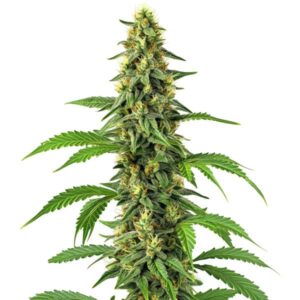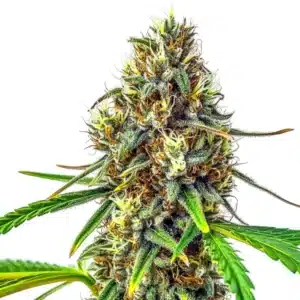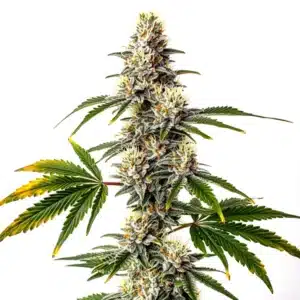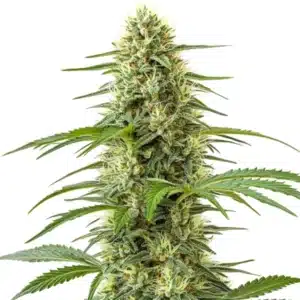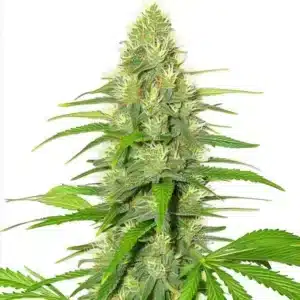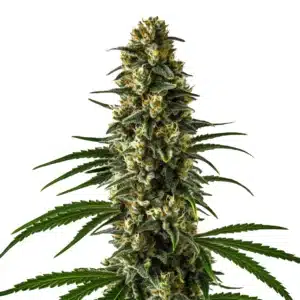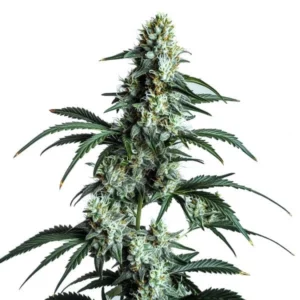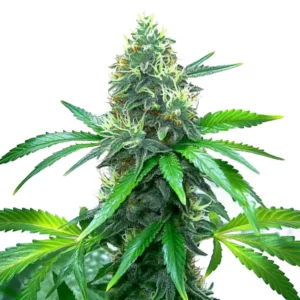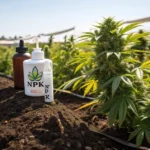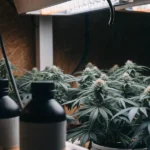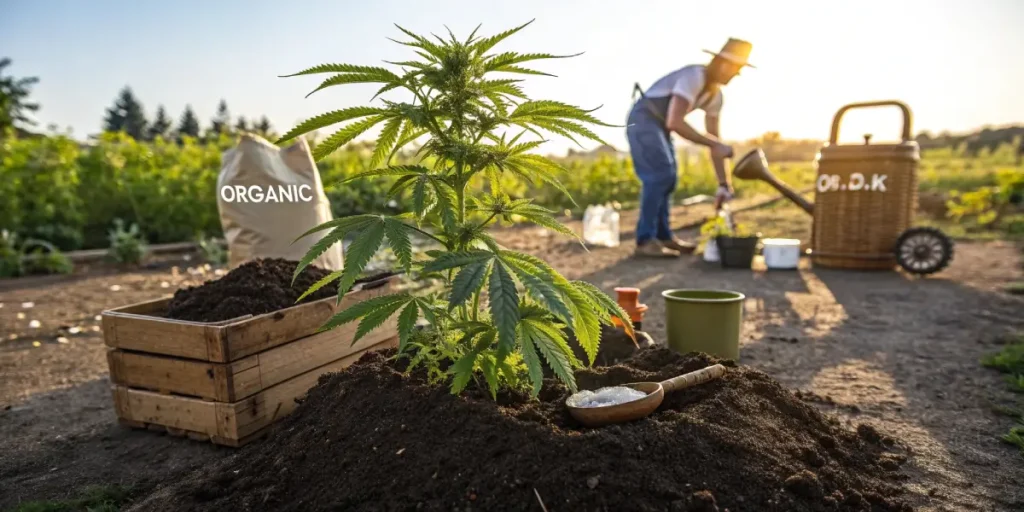
Fertilizer for Outdoor Cannabis Growth
Growing cannabis outdoors can be a rewarding venture, allowing you to connect with nature while nurturing a thriving plant. One vital element for cultivating healthy outdoor cannabis is the use of fertilizer for outdoor weed. Knowing the right type of fertilizer to use and the best timing can make all the difference in your growing season. Let’s explore the details of choosing fertilizers for outdoor cannabis and how they influence growth.
Fertilizer Types
When you set out to choose a fertilizer for outdoor weed, it’s crucial to familiarize yourself with the different types available. Generally, fertilizers fall into two primary categories: organic and synthetic. Each has its own set of benefits and drawbacks, so understanding these differences can empower you to make an informed choice.
Recommended Strains
24k Gold
|
|
THC | 19% - 22% (Medium) |
|
|
Type | Feminized |
|
|
Yield | High |
|
|
Phenotype | 60% Indica / 40% Sativa |
24K Gold Regular
|
|
THC | 19% - 22% (Medium) |
|
|
Type | Regular |
|
|
Yield | Medium |
|
|
Phenotype | 60% Indica / 40% Sativa |
Organic Fertilizers
Organic fertilizers are derived from natural sources, including plant material and animal waste. These fertilizers not only provide vital nutrients but also enhance soil health by improving its structure and promoting water retention. Here are three popular types of organic fertilizers to consider:
- Compost: Acts as a nutrient-rich option, releasing nutrients slowly over time, which is beneficial for sustained plant growth.
- Bone Meal: High in phosphorus, bone meal encourages robust root development and flower production, creating beautiful buds.
- Fish Emulsion: This liquid fertilizer is rich in nitrogen and supports vigorous vegetative growth, making it ideal for young plants.
Utilizing organic fertilizers often helps create a thriving ecosystem within the soil, encouraging beneficial microorganisms that assist with nutrient uptake. While they may take longer to show noticeable effects compared to synthetic options, the long-term benefits typically lead to healthier plants.
It’s also worth noting that using the right fertilizer for outdoor weed can make a significant difference in plant health and yield. Organic fertilizers help improve soil fertility over time. By building up organic matter in the soil, these fertilizers can enhance microbial activity, creating a sustainable growing environment. For instance, many experienced growers appreciate how compost can enrich their soil gradually, resulting in more robust plants less reliant on chemical inputs.
Synthetic Fertilizers
Synthetic fertilizers, on the other hand, are chemically manufactured with specific nutrient formulations aimed for quick absorption by plants. They are designed to show immediate results, which can be advantageous in time-sensitive situations. Here are a few common synthetic fertilizers you might encounter:
- N-P-K Fertilizers: These fertilizers are labeled with three numbers, representing ratios of nitrogen (N), phosphorus (P), and potassium (K) that are crucial for plant health.
- Liquid Fertilizers: Fast-acting and easy to apply, liquid fertilizers are suitable for promoting vigorous growth phases due to their quick absorption.
- Slow-Release Granules: These formulations allow for nutrients to be released over an extended period, which minimizes the frequency of applications.
While synthetic fertilizers can fast-track plant growth, they also come with the risk of creating nutrient imbalances if not applied accurately. Careful measurement and keen observation of plant responses are essential to avoid any negative consequences.
A common approach among growers using synthetic fertilizers is to incorporate them strategically alongside organic inputs. This way, they can benefit from the immediate effects of synthetic options while building soil health with organic materials. Striking this balance can lead to improved overall plant health and yield.
Promos & Deals
The Nutritional Needs of Cannabis
Cannabis plants have evolving nutritional requirements that shift as they progress through various growth stages. Providing the right nutrients at the right times enables your plants to thrive and achieve their fullest potential. Let’s delve into the specific needs at different growth phases.
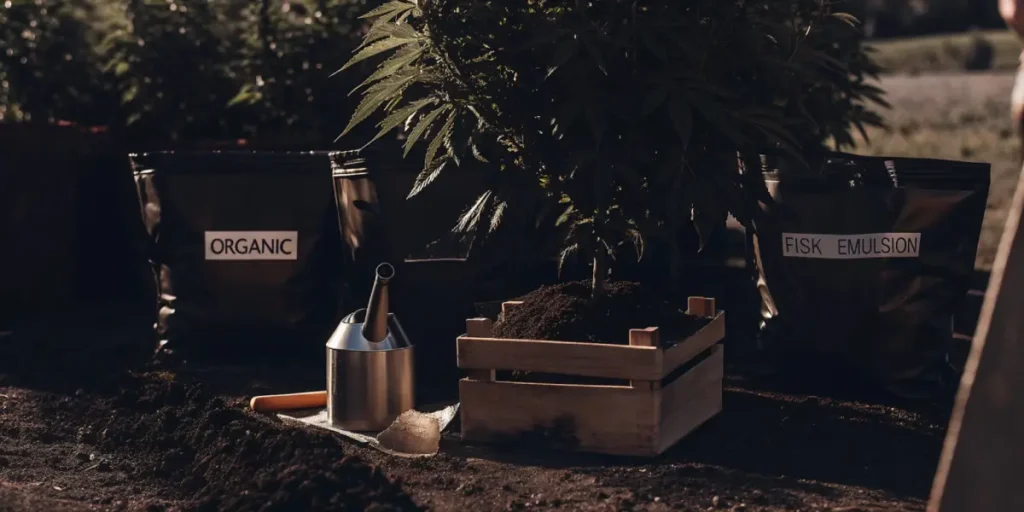
Seedling Phase
During the seedling phase, cannabis plants require a gentle introduction to nutrients. This stage dictates that you should opt for a low-concentration fertilizer to avoid overwhelming the young plants. Many growers find success using options such as:
- Liquid Seaweed Extract: Infused with trace nutrients, this fertilizer provides essential microelements without financial stress on young plants.
- Diluted Fish Emulsion: This offers a steady source of nitrogen, ideal for encouraging healthy growth, but must be used in moderation.
Light feeding during this phase fosters healthy seedlings, ensuring they develop strong roots and foliage. Tremendous care is needed, as over-fertilizing can cause nutrient burn, which may stunt growth and lead to other complications.
Many growers keep a close watch on their seedlings during this critical time. Observing changes in leaf color or structure can help indicate whether adjustments are needed. Regular attention to watering regimes and light exposure also contributes to seedling success.
Vegetative Stage
As the plants transition into the vegetative stage, their nutrient needs will intensify. They typically require higher nitrogen levels to support lush foliage growth. Recommended fertilizers for this phase include:
- High-Nitrogen Blends: These fertilizers boost leaf production, creating a robust plant structure necessary for future flowering.
- Organic Compost Teas: These provide a lively mix of beneficial microbes, enhancing nutrient availability and uptake.
Ensuring adequate nutrition during this stage sets the groundwork for successful flowering later on. Just as seedlings need attention, mature plants also benefit from regular monitoring and alterations in feeding as necessary in response to their growth.
Engaging with your plants during the vegetative phase allows you to observe their development closely. This phase is also an excellent opportunity to train your plants through methods like topping or low-stress training, maximizing light exposure and yield potential. Additionally, choosing the right fertilizer for outdoor weed at this stage ensures your plants receive essential nutrients for vigorous growth.
Flowering Stage and Its Nutritional Demands
As cannabis plants shift from vegetative growth into the flowering stage, their nutritional demands drastically change. At this point, the focus should switch to increasing phosphorus and potassium levels to support bud development. Here are effective fertilizer options during this crucial phase:
Flower Booster Fertilizers
Flower booster fertilizers high in phosphorus and potassium can greatly enhance both yield and quality. Look for:
- Phosphorus-Rich Fertilizers: These encourage flowering and help produce bigger, denser buds, leading to an impressive harvest.
- Organic Bloom Products: Often derived from natural sources, these fertilizers gently provide necessary nutrients to the developing buds.
Most flower boosters come fortified with micronutrients that play vital roles during flowering. Adopting a well-balanced approach by combining various fertilizers will set the stage for a successful and rewarding harvest.
Maintaining proper pH levels during this stage is also essential. Keeping the soil pH between 6.0 to 7.0 encourages optimal nutrient uptake, allowing your plants to absorb everything they need for robust growth. Regularly testing your soil can help you stay on top of this important factor.
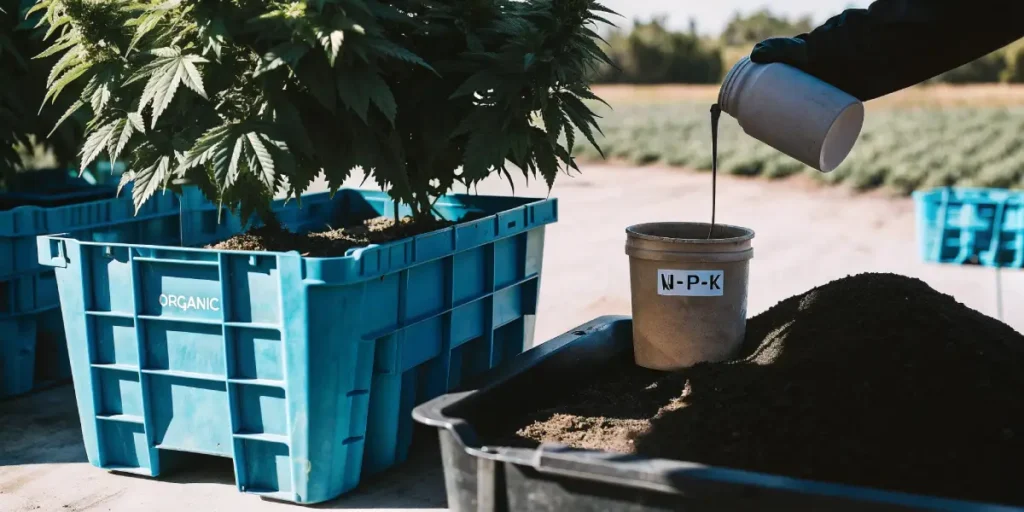
Maintenance and Monitoring
The journey doesn’t end with simply applying fertilizer for outdoor weed; regular monitoring of plant health and soil conditions is crucial. Conducting soil tests can help you evaluate pH levels and nutrient availability. Cannabis thrives best when the soil pH is balanced and within range.
If soil conditions are too acidic or alkaline, nutrient uptake may be disrupted, leading to deficiencies or toxicities. Assessing these factors regularly allows for the necessary adjustments to foster flourishing plants.
Staying connected with your plants through attentive observation can make all the difference. Take notes on how they respond to specific fertilizers or environmental changes, as this knowledge helps inform future growing decisions.
Choosing the Right Source of Fertilizer
Whether you choose to work with organic or synthetic fertilizers, sourcing them from reliable suppliers is paramount. The quality of fertilizers you use can significantly influence the performance of your cannabis plants, so seeking out reputable brands is essential.
Recommended Brands
Many reputable brands focus on creating high-quality fertilizers specifically for cannabis cultivation. A few noteworthy ones include:
- General Hydroponics: Renowned for their liquid feeding options and comprehensive nutrient systems that cater to all growth stages.
- FoxFarm: Offers an array of organic and synthetic options specifically designed for cannabis plants, delivering consistent results.
- Down to Earth: Specializes in organic amendments, perfect for growers wishing to enhance soil health naturally.
Investing in respected brands ensures you avoid potential pitfalls associated with low-quality products, allowing you to provide your plants with optimal care and nutrition.
Another tip is to connect with other growers through forums or social media groups who can share their experiences regarding specific brands or products. Community feedback often leads to valuable insights and recommendations.
Timing and Application Techniques
The timing and methods of applying fertilizers can dramatically affect their effectiveness. Understanding the best times for application and adjusting your techniques can yield remarkable results.
Application Timing
The growing season and prevailing weather conditions play crucial roles in determining when to apply fertilizers. Here are a few guidelines to keep in mind:
- Apply fertilizers during the early morning or late afternoon to minimize evaporation and ensure better absorption by plants.
- Feed your plants when they are actively growing, which typically coincides with warm weather months.
- Gradually reduce feeding as plants approach harvest to prevent nutrient buildup that might compromise flavor.
Effective timing can lead to healthier plants and improved yields. Exercise caution during later growth stages to avoid over-fertilization, which may negatively affect the final product’s quality and flavor.
Consider documenting your feeding schedules and noting the weather patterns during your growing season. This practice can help you synchronize your fertilizer applications effectively, optimizing plant growth throughout the year.
Application Methods
There are various methods available for applying fertilizers, each offering unique benefits. Some popular ones include:
- Top Dressing: This method involves sprinkling dry fertilizers on the soil’s surface, allowing nutrients to permeate as water flows through.
- Watering In: Mixing liquid fertilizers with water and applying them ensures quick absorption by the roots, making them highly effective.
- Foliar Feeding: Spraying nutrients directly onto leaves can provide rapid nutrient uptake, particularly beneficial during peak growth periods.
Choosing the right application method often depends on the growth stage and fertilizer type selected. Many experienced growers find success by incorporating multiple techniques throughout the growing process.
Common Issues and Troubleshooting
Even with diligent planning, growers may encounter issues related to plant nutrition. Choosing the right fertilizer for outdoor weed is crucial to prevent deficiencies and ensure robust growth. Being able to recognize and address these challenges early can save valuable time and effort during the growing journey.
Signs of Nutrient Deficiencies
As you monitor your plants, be on the lookout for common symptoms of nutrient deficiencies. Some signs to watch for include:
- Yellowing Leaves: Often indicate nitrogen deficiency, affecting overall growth and vigor.
- Wilting or Drooping: This may signal over-fertilization or a lack of critical nutrients that plants require.
- Brown Tips on Leaves: This can be a telltale sign of potassium deficiency, necessitating immediate attention.
Identifying these signs early allows for timely remediation, potentially saving your entire harvest from being compromised. Furthermore, documenting these instances can help track performance over time.
Excess Fertilization
Over-fertilization can create significant stress on your plants, leading to nutrient burn and other complications. To mitigate these effects, consider the following strategies:
- Flushing the soil with water to dilute any excess nutrients and restore balance.
- Reducing fertilizer concentration in future applications to prevent further stress.
- Switching to an organic approach if you find that over-fertilization is a recurring issue, as this tends to be gentler on the plants.
Being mindful of the repercussions of over-fertilizing is essential to safeguarding your yield. Keeping comprehensive records of your feeding schedules and observing your plants’ responses can help you avoid similar issues in the future.
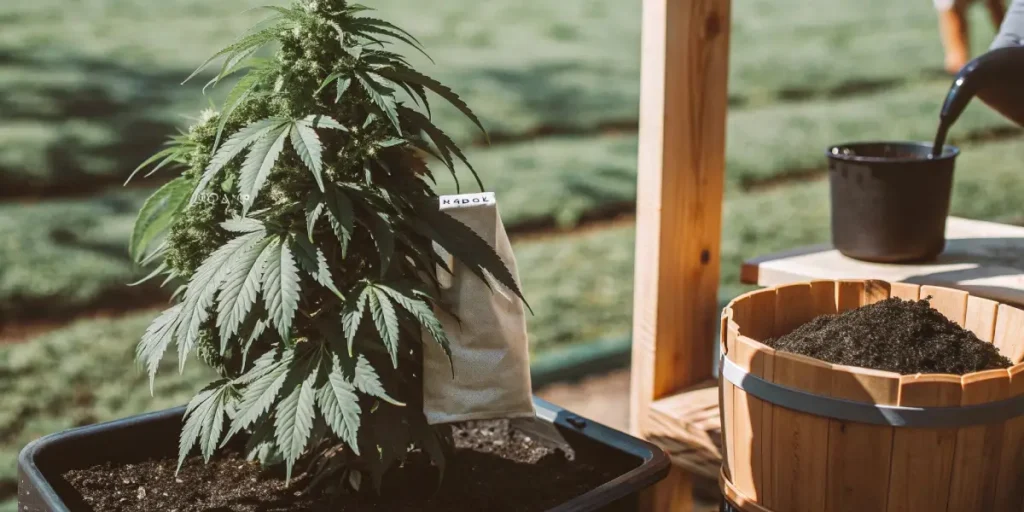
Strains to Consider for Outdoor Growth
When it comes to outdoor cannabis cultivation, certain strains thrive more effectively and adapt better to various climates. Here are three strains worth considering for your outdoor project:
- Blue Dream: This popular hybrid is known for its balanced effects and resilience to outdoor conditions, making it a favorite among growers.
- White Widow: Offering a strong growth pattern and excellent yields, this strain is particularly well-suited for outdoor environments.
- Girl Scout Cookies: Renowned for its flavorful buds, this strain is adaptable and thrives in various growth conditions.
Selecting the right strain in relation to your local climate can significantly impact the success of your outdoor growth project. Each of these strains possesses unique traits that make them ideal for outdoor cultivation experiences.
FAQs About Fertilizer for outdoor weed
What is the best fertilizer for outdoor cannabis?
The most suitable fertilizer depends on your growing phase. Organic options like compost are well-suited for seedlings, while phosphorus-rich fertilizers are beneficial for plants during flowering. Experimenting with different types may help you discover what works best for your specific strains.
How often should I fertilize my outdoor cannabis?
Typically, feeding every 2-4 weeks provides ample nutrition for your plants. However, it’s essential to adjust based on plant responses, growth stage, and soil conditions. Always exercise caution to avoid over-fertilizing your plants.
Can I use fertilizers designed for vegetables on cannabis?
Yes, many fertilizers meant for vegetables can work effectively for cannabis. However, be mindful of the nutrient ratios, especially focusing on adequate nitrogen during the vegetative stage and heightened phosphorus during flowering.
What are the signs of over-fertilization?
Common indications include burnt leaf edges, wilting, and stunted growth. If you observe these symptoms, consider flushing your plants with water and reducing your feeding frequency to prevent further damage.


